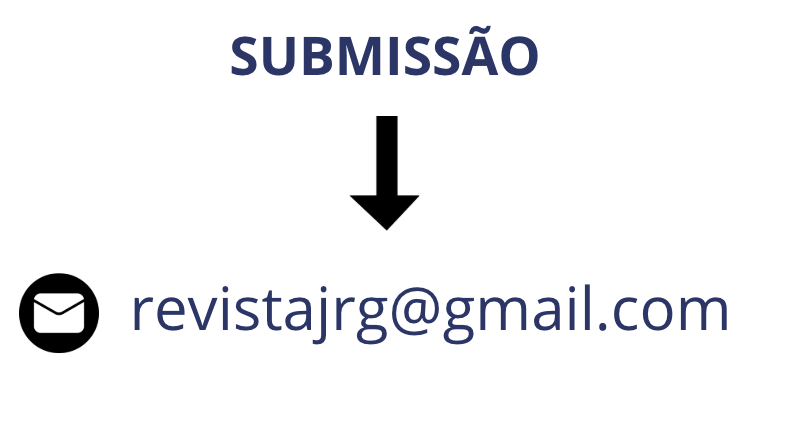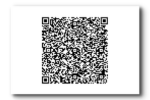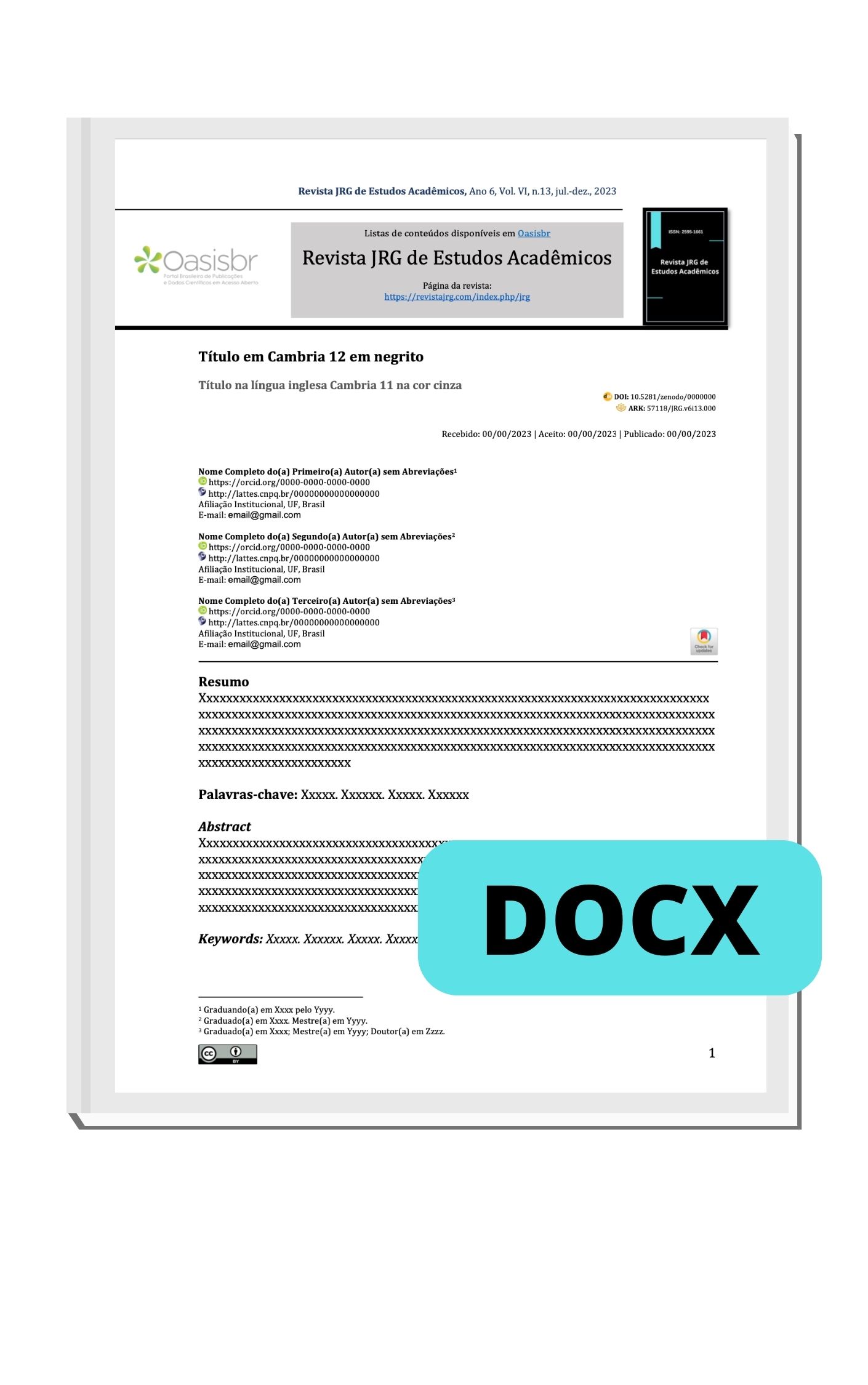Hyperbaric therapy as an adjuvant in diabetic foot therapy: an integrative review
DOI:
https://doi.org/10.55892/jrg.v7i14.1130Keywords:
Diabetic Foot, Hyperbaric Oxygenation, NurseAbstract
Introduction: Hyperbaric oxygen therapy (HBOT) consists of exposing the patient to inhalation of 100% pure oxygen, at room temperature, under pressure greater than atmospheric pressure at sea level. It results in increased cellular oxygenation and breaking the vicious cycle of ischemia, causing vasoconstriction and consequently reducing edema and compartment pressures. As it helps to improve infection and healing processes, it is used as an adjuvant for the treatment of various pathologies, such as diabetic foot ulcers. Objectives: The present work aims to highlight nursing care for patients who use HBOT to treat diabetic foot. Methodology: This is an integrative literature review, carried out from February to April 2024 on the Virtual Health Library (VHL) portal, in the databases Medical Literature Analysis and Retrieval System Online (MEDLINE), Database of Nursing Data (BDENF) and Latin American and Caribbean Literature in Health Sciences (LILACS), using the Health Sciences Descriptors (DeCS): Hyperbaric oxygen therapy AND Nursing OR Hyperbaric oxygen therapy AND Diabetic foot. Cross-checking the descriptors in the databases chosen for the review resulted in 332 results. After inserting the inclusion and exclusion criteria, there were a total of 121 records, of which 10 articles were selected as relevant to the study. Results: The findings showed that the professional nurse is responsible for providing assistance both before, during and after each oxygen therapy session. Regarding the benefits of this therapy in the treatment of diabetic foot, the most important effects were: it accelerates wound healing, reduces patient hospitalizations, reduces amputations, improves pain sensation, increases quality of life and patient survival. Conclusion: The use of hyperbaric oxygen therapy as an adjuvant method to conventional therapy proved to be much more effective than the use of conventional therapy alone, with the nurse being one of the protagonists in the use of this therapy.
Downloads
References
ALMEIDA NETO, A. B. Saúde do trabalhador que atua em câmaras hiperbáricas: revisão literária. Monografia (Bacharelado em Enfermagem) - Faculdade de Ciências da Educação e Saúde, Brasília. 2013. 30p.
ANDRADE, S. M.; SANTOS, I. C. R. V. Oxigenoterapia hiperbárica para tratamento de feridas. Revista Gaúcha de Enfermagem, Porto Alegre, v. 37, n. 2, e59257, 2016. Disponível em <http://dx.doi.org/10.1590/1983-1447.2016.02.59257>.
ARAÚJO, T. M. et al. Tratamento de lesões nos pés de pessoas com diabetes mellitus no cenário brasileiro: revisão integrativa. Revista Enfermagem Atual in Derme, v. 96, n. 39, e-021274, 2022. Disponível em: <https://revistaenfermagematual.com/index.php/revista/article/view/1093/1446>.
BARBOSA, P. R. A. et al. Oxigenoterapia hiperbárica no processo de cicatrização
de feridas: revisão de literatura. Revista Enfermagem Atual in Derme, v. 93, n. 31, e-020031, 2020. Disponível em: <https://repositorio.ufc.br/bitstream/riufc/58159/1/2020_art_prabarbosa.pdf>.
BARDIN, L. Análise de conteúdo. São Paulo: Edições 70, 2011, 229p.
BRASILEIRO, J. L. et al. Pé diabético: aspectos clínicos. Jornal vascular brasileiro, v. 4, n. 1, p. 11-21, 2019. Disponível em: <http://www.jvb.periodikos.com.br/article/5df24eeb0e88256c24b5f733/pdf/jvb-4-1-11.pdf>.
BRITO, R. M.; GAGLIANI, L. H. Oxigenoterapia hiperbárica: suas indicações e contraindicações no controle das infecções. Revista UNILUS Ensino e Pesquisa, v. 16, n. 44, p. 105-126, 2019. Disponível em: <http://revista.unilus.edu.br/index.php/ruep/article/view/1178/u2019V16n44e1178>.
CABRAL, A. D. et al. Terapias inovadoras para reparo tecidual em pessoas com pé diabético. Revista Enfermagem Atual in Derme, v. 96, n. 39, e-021268, 2022. Disponível em: <https://revistaenfermagematual.com/index.php/revista/article/view/1365/1436>.
CAMILO, C. GARRIDO, M.V. A revisão sistemática de literatura em psicologia:Desafios e orientações. Análise Psicológica, v. 37, n. 4, p.535-552, 2019. Disponível em: <http://publicacoes.ispa.pt/index.php/ap/article/view/1546/pdfDOI:http://dx.doi.org/10.14417/ap.1546>.
CANNELLOTTO, M. et al. Aplicaciones médicas de las cámaras de oxigenación hiperbárica de nueva generación. Revista de la Asociación Médica Argentina, v. 131, n. 4, p. 12-20, 2018. Disponível em: <https://www.ama-med.org.ar/uploads_archivos/1497/Rev-4-2018-Pag-12-20-Cannellotto.pdf>.
CAPÓ, X. et al. Hyperbaric Oxygen Therapy Reduces Oxidative Stress and Inflammation, and Increases Growth Factors Favouring the Healing Process of Diabetic Wounds. International Journal of Molecular Sciences, v. 24, n. 8, e7040, 2023. Disponível em: <https://doi.org/10.3390%2Fijms24087040>.
CARVALHO, L. C. G.; GONÇALVES, O. Oxigenoterapia hiperbárica: indicações, contraindicações e efeitos colaterais. Revista Perquirere, n. 18, p. 381-390, 2021. Disponível em: <https://revistas.unipam.edu.br/index.php/perquirere/article/view/2531/578>.
CASAGRANDE, M. E. C. et al. Oxigenoterapia Hiperbárica como adjuvante no tratamento de feridas. Brazilian Journal of Health Review, Curitiba, v. 4, n. 2, p. 7154-7158, 2021. Disponível em: <http://dx.doi.org/10.34119/bjhrv4n2-261>.
CASTILHO, R. S.; ZAMBELLI, R. Pé diabético: a importância do tratamento
multidisciplinar. Revista Mineira de ortopedia e traumatologia, v. 12, n. 14, p. 42-49, 2023. Disponível em: <https://sbot-mg.org.br/wp-content/uploads/2023/10/Revista_Mineira_2023.pdf#page=21>.
CHEN, H. et al. Application of hyperbaric oxygen therapy in diabetic foot ulcers: A meta‐analysis. International Wound Journal, v. 21, n. 4, e14621, 2024. Disponível em: <https://doi.org/10.1111%2Fiwj.14621>.
COUTO, S. I. S. et al. Funcionamento da oxigenoterapia hiperbárica e seu uso no tratamento do pé diabético: quais os cuidados de enfermagem?. Research, Society and Development, v. 10, n. 13, e241101320708, 2021. Disponível em: <http://dx.doi.org/10.33448/rsd-v10i13.20708>.
ERCAN, E. et al. The effect of hyperbaric oxygen therapy on hematological indices and biochemical parameters in patients with diabetic foot. Medicine, Baltimore, v. 103, n. 12, e37493, 2024. Disponível em: <https://doi.org/10.1097%2FMD.0000000000037493>.
FADOL, E. M. et al. Therapeutic outcomes evaluation of adjuvant hyperbaric oxygen
therapy for non-healing diabetic foot ulcers among sudanese patients. Diabetes & Metabolic Syndrome: Clinical Research & Reviews, v. 15, e102173, 2021. Disponível em: <https://doi.org/10.1016/j.dsx.2021.06.010>.
FÉLIX, R. A.; SANTOS, R. A. Assistência de enfermagem ao paciente submetido à oxigenoterapia hiperbárica. Revista Transformar, n. 10, p. 140-151, 2017. Disponível em: <http://www.fsj.edu.br/transformar/index.php/transformar/article/view/98/94>.
GAGLIARDI, Antonio RT. Neuropatia diabética periférica. Jornal vascular brasileiro, v. 2, n. 1, p. 67-74, 2020. Disponível em: <http://www.jvb.periodikos.com.br/article/5e220d1d0e882507026d0102/pdf/jvb-2-1-67.pdf>.
GAMBOA, M. C. R.; LÓPEZ, M. S. Evolución del pie diabético en los grados 4 y 5 de la clasificación de Wagner. Revista Cubana de Angiologia e Cirurgia Vascular, Havana, v. 18, n. 1, p. 71-81, 2017. Disponível em: <http://scielo.sld.cu/scielo.php?script=sci_arttext&pid=S1682-00372017000100007>.
GONÇALVES, E. S.; SANTOS, H. J. G.; BARBOSA, J. S. P. Assistência de enfermagem no manejo do diabetes mellitus na atenção primária em saúde. Revista Revolua, v. 1, n. 2, p. 96-106, 2022.
HEYBOER, M. et al. Hyperbaric Oxygen Therapy: Side Effects Defined and Quantified. Advances in Wound Care, v. 6, n. 6, p. 210-24, 2017. Disponível em: <https://doi.org/10.1089%2Fwound.2016.0718>.
JIRA, M. et al. Hyperbaric oxygen therapy in the treatment of diabetic foot: experience in the management of 80 cases at a department of internal medicine. The Pan African Medical Journal, v. 30, e100, 2018. Disponível em: <https://doi.org/10.11604%2Fpamj.2018.30.100.14826>.
LIMA, I. G. S. Os benefícios da oxigenoterapia hiperbárica em feridas: revisão bibliográfica. Revista Multidisciplinar em Saúde, v. 3, n. 3, 3404, 2022. Disponível em: <https://doi.org/10.51161/rems/3404>.
MENDES, K. D. S.; SILVEIRA, R. C. C. P.; GALVÃO, C. M. Uso de gerenciador de referências bibliográficas na seleção dos estudos primários em revisão integrativa. Texto e contexto Enfermagem, Florianópolis, v. 28, e20170204, 2019. Disponível em: <https://dx.doi.org/10.1590/1980-265X-TCE-2017-0204>.
MIGUEL, K. R. M.; OLIVEIRA, R. J.; GASPARIN, C. C. Fisioterapia e Neuropatia Diabética: Revisão de Literatura. Brazilian Journal of Implantology and Health Sciences, v. 6, n. 2, p. 1262-1282, 2024. Disponível em: <https://bjihs.emnuvens.com.br/bjihs/article/view/1459/1655>.
MOREIRA, D. J. Lesões de pé diabético tratadas com a oxigenoterapia hiperbárica. Monografia (Bacharelado em Enfermagem) - Faculdade Anhanguera, Taubaté, SP. 2018. 26p.
Oxford Centre for Evidence-based Medicine: levels of evidence. 2009. Disponível em: <http://www.cebm.net/oxford-centre-evidence-based-medicine-levels-evidence-march-2009>.
OYEBODE, O. A.; JERE, S. W.; HOURELD, N. N. Current Therapeutic Modalities for the Management of Chronic Diabetic Wounds of the Foot. Journal of Diabetes Research, e1359537, 2023. Disponível em: <https://doi.org/10.1155%2F2023%2F1359537>.
PASEK, J. P. et al. Local Hyperbaric Oxygen Therapy in the Treatment of Diabetic Foot Ulcers. International Journal of Environmental Research and Public Health, v. 19, n. 17, e10548, 2022. Disponível em: <https://doi.org/10.3390%2Fijerph191710548>.
PEREIRA, B.; ALMEIDA, M. A. R. A importância da equipe de enfermagem na prevenção do pé diabético. Revista JRG de Estudos Acadêmicos, v. 3, n. 7, 2020. Disponível em: <https://doi.org/10.6084/m9.figshare.12649787>.
QUEIROZ, G. N. et al. O papel da oxigenoterapia hiperbárica no tratamento do Pé Diabético: uma revisão narrativa. Brazilian Journal of Development, Curitiba, v. 9, n. 6, p. 20006-20023, 2023. Disponível em: <https://doi.org/10.34117/bjdv9n6-86>.
SALAMA, S. E. et al. Adjuvant Hyperbaric Oxygen Therapy Enhances Healing of Nonischemic Diabetic Foot Ulcers Compared With Standard Wound Care Alone. The International Journal of Lower Extremity Wounds, v. 18, n. 1, p. 75-80, 2019. Disponível em: <https://doi.org/10.1177/1534734619829939>.
SILVA, J. S.; OLIVEIRA, A. C. D. A importância do curativo realizado pelo enfermeiro em feridas de pacientes diabéticos. Revista Multidisciplinar do Nordeste Mineiro, v. 10, 2022. Disponível em: <https://revista.unipacto.com.br/index.php/multidisciplinar/article/view/1174/1137>.
SIONA, B. F. Uso de câmara hiperbárica para tratamento de lesão por pressão: atuação do enfermeiro. Monografia (Bacharelado em Enfermagem) - Faculdade de Educação e Meio Ambiente, Ariquemes, RO. 2019. 37p.
SOUZA, L. H. V. et al. Efeitos da oxigenoterapia hiperbárica na regeneração tecidual: revisão de literatura. Brazilian Journal of Health Review, Curitiba, v. 6, n.1, p.1744-1755, 2023. Disponível em: <https://doi.org/10.34119/bjhrv6n1-138>.
TIKAMI, K. F. et al. Perfil dos pacientes com gangrena de Fournier utilizando a oxigenoterapia hiperbárica como tratamento adjuvante. Medicina, Ribeirão Preto, v. 53, n. 1, p. 21-25, 2020. Disponível em: <https://doi.org/10.11606/issn.2176-7262.v53i1p21-25>.











































